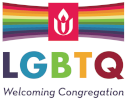February 10, 2008.
I am deeply touched and humbled by couples who are in love and who come to talk with me about themselves and about their wedding or civil union ceremony. One example I keep in my file always brings a smile to my face.
The young woman told me she wrote in her journal, “I saw this guy in the Twelve Pine Restaurant, waiting in line. I find him adorable, and I am a little in love with him. Or as much as a person can be if they’ve only seen the person and never talked to them. But for as much as the words mean….I’m in love with him. I followed him a little bit around town that afternoon. I don’t know if I will ever see him again. Should I introduce myself to him and risk rejection, or should I let him walk out of my life and risk never seeing him again? ”
According to one book, that feeling and awareness of, “I’m a little in love with him,” comes from the limbic part of the brain. The other two parts of the brain are the reptilian which is responsible for basic functions like breathing, and the neocortex, which is the thinking part of the brain. The attractors that send messages to us from the limbic brain are embedded in the very structure of thought and are near impossible to think our way around. Pheromones and hormones also play a part in that feeling of “I’m a little in love with him.”
Mindful of the anniversary of Charles Darwin’s birthday in two days, love and the limbic part of the brain are both product of that quizzical process of natural selection.
Ann Swidler notes, that “In loving and being loved, people give themselves over, at least for brief periods, to intensely moving experiences through which they achieve new awareness of self and others. Love can make possible periods of crystallization or reformulation of the self and the self’s relationship to the world. Beliefs about love permeate people’s hopes for themselves, their evaluations of experience, and their sense of place in the world.” (from Themes of Work and Love in Adulthood.)
As an older middle age minister, I have been surprised to discover that I know less about love today than I knew 30 years ago. On the other hand, I know a great deal more about the obstacles to love. Many of the weddings and union ceremonies I have officiated at over 30 years have included those lovely words from 1st Corinthians 13, that end with “Now faith, hope, and love abide, these three, and the greatest of these is love.” But this New Testament passage is more than just a rosy glow about love. It is more of a road map on how to get around the many obstacles to love, such as…..impatience, envy, arrogance, rudeness, insisting on one’s own way, irritation, wrong doing, centering one’s life around knowledge and possessions, acting like a child instead of like an adult.
The apostle Paul wrote this letter, and he wasn’t writing to congratulate the Corinthian Christians for their compassion and exemplary behavior. To the contrary, he was accusing them of backsliding away from Jesus’ commandments to love God, love your neighbor, love your enemies.
I can’t blame the Corinthians. Jesus’ love talk is crazy talk. Loving one’s enemy is suicidal, and there is little in our dna that would lead us to love strangers outside of our families, our clans, and our tribes.
What Jesus discovered was that love is one of the brain functions that connects us to other people, to ourselves, to our world, and to the sacred. By choice or by intuition, love connects us.
Like many ministers before me, I find that the theologians and the philosophers speak less and less to me about how to activate my limbic love. It is the poets who open my eyes and ears, and who remind me how achingly poignant it is to love life and one’s world. Ted Kooser, past poet laureate of the United States, Pulitzer prize winner, and a Unitarian Universalist from Nebraska, finds my limbic faucet in his poems. For example:
“A Rainy Morning,”
A young woman in a wheelchair,
Wearing a black nylon poncho spattered with rain,
Is pushing herself through the morning.
You have seen how pianists
Sometimes bend forward to strike the keys,
Then lift their hands, draw back to rest,
Then lean again to strike just as the chord fades.
Such is the way this woman
Strikes at the wheels, then bends again to strike
Just as the chair slows, as if into a silence.
So expertly she plays the chords
Of this difficult music she has mastered,
Her wet face beautiful in its concentration,
While the wind turns the pages of rain. Ted Kooser
I have come to know that if I practice reading a poem out loud before I go to sleep at night, that it brings me comfort, clears my mind of many of the obstacles to love. The same is true as a morning practice.
When I receive gift certificates to book stores I spend most of them on books of poetry. Carrying a book of poems from the book store opens my limbic faucet. One of the poetry books I bought was Nine Horses by Billy Collins. In his poem, Aimless Love, he writes of being transformed by loving what he sees and touches.
Aimless Love
This morning as I walked along the lakeshore,
I fell in love with a wren,
And later in the day with a mouse
The cat had dropped under the dining room table.
In the shadows of an autumn evening,
I fell for a seamstress
Still at her machine in the tailor’s window,
And later for a bowl of broth,
Steam rising like smoke from a naval battle.
This is the best kind of love, I thought,
Without recompense, without gifts,
Or unkind words, without suspicion,
Or silence on the telephone.
The love of the chestnut,
The mushroom cap and one hand on the wheel.
No lust, no slam of the door---
The love of the miniature orange tree,
The clean white shirt, the hot evening shower,
The highway that cuts across Florida.
No waiting, no huffiness, or rancor---
Just a twinge every now and then
For the wren who had built her nest
On a low branch overhanging the water
And for the dead mouse,
Still dressed in its light brown suit.
But my heart is always propped up
In a field on its tripod,
Ready for the next arrow.
After I carried the mouse by the tail
To a pile of leaves in the woods,
I found myself standing at the bathroom sink
Gazing down affectionately at the soap,
So patient and soluble,
So at home in its pale green soap dish.
I could feel myself falling again
As I felt its turning in my wet hands
And caught the scent of lavender and stone.
If poetry helps my limbic faucet turn on a little love, I have been most surprised to learn about how love is not just a feeling, but dependent upon a choice to be vulnerable to the mystery in people, in the world, and in oneself. On the back of your order of service you will find the purposes and principles of the Unitarian Universalist Association of churches. One of the principles is the power of love to transform us. It can transform me toward good, toward compassion for others, and toward the sacred. Love can transform me toward justice and equality,
To paraphrase what Andrew Young said of the civil rights movement in the 1960’s “We came to love the hell out of segregation and inequality.” Injustice and inequality were two of the “hells” that needed to be removed from our society, and they discovered that they could love those hells out of society.
I cannot show you love like a piece of paper, or hold it out to touch. But I know that love can transform me, and I have witnessed you and others transforming closed doors into open ones . I bear witness to love’s power to open connections over space and time, to other people, to nature, and to the sacred.
“I saw this guy at Twelve Pine Restaurant,” wrote the young woman, “and I am falling a little in love with him.” Over the period of a year, she saw him occasionally downtown, and one day introduced herself to him, the limbic faucet open and running. Three years later they were married.


